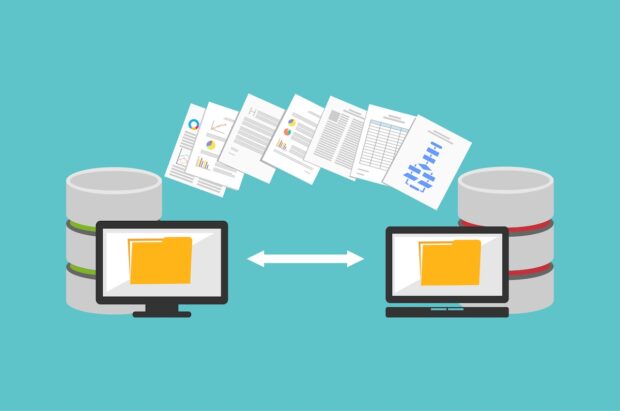Statistics suggest that around half of all ERP projects fail, with significant cost overruns, missed schedules, and unmet expectations.
The main reason for these failures is that most medium-sized companies lack experience with large and complex IT projects.
Although competence with ERP systems is gradually built up during implementation, mistakes made during the early stages can set the project off on the wrong track.
In reality, most ERP projects don’t fail due to poor selection or functionality; they fail because of the implementation process. Companies should prepare themselves and their teams for the SAP S/4HANA migration to mitigate these risks.
Seven typical pitfalls can endanger ERP projects, and avoiding them is crucial to ensure success. Let’s have a look at them!

1. Poorly defined goals
The first pitfall many ERP projects encounter is a lack of clearly defined goals. Many companies view ERP software as a solution to all of their problems without taking the time to outline specific objectives and performance measures.
This can result in different departments having conflicting expectations, making it difficult for organizations to prioritize requirements effectively.
To avoid getting sidetracked by politics, short-term thinking, and minor setbacks that can derail projects, it is essential to have a detailed map outlining what you want to achieve with the ERP system and where the priorities lie.
Some examples of specific goals include:
- reducing errors;
- streamlining workflows;
- improving service quality;
- supporting internationalization.
Apply these goals to your teams and see what happens.
2. Inadequate management commitment
Another common problem is the lack of sufficient management commitment. While employees may be aware of the time and effort required for implementation, the disengagement or busy schedules of management can impede progress.
Successful implementation requires strong and active support from management, including:
- clear communication;
- resource allocation;
- positive attitude;
- appreciation;
- availability for planning sessions.
Without this commitment, the project is at risk of failure.

3. Lack of expertise on the project team
It’s crucial to assemble the right team consisting of a project manager, key users, and IT staff who possess the necessary skills and cover all relevant business areas.
A good project manager should have the following:
- close ties to the daily business;
- deep insights into all departments;
- strong organizational skills;
- assertiveness;
- social competence.
The team should also be supported by a project manager from the SAP implementation partner who provides valuable input and drives the process based on an implementation methodology.
Additionally, having clear role descriptions, responsibilities, and ground rules for resolving disagreements can help avoid knowledge gaps and ensure a collaborative implementation process.
Building a great team requires a clear framework of goals and expectations as well as robust and proactive leadership.
4. Missing open communication
Let’s also not forget about open communication between various stakeholders, including management, the project team, employees, and the software vendor. Failure to promptly and transparently address employee questions and concerns can lead to rumors and negativity, derailing implementation.
To avoid this pitfall, it’s important to establish a continuous flow of information from the outset of the implementation process. This can be achieved through:
- regular meetings between the ERP project manager and management team;
- information sessions for employees;
- company-wide emails or newsletters for project updates.
All relevant documentation, to-dos, and project progress reports must be easily accessible to all stakeholders.
Over-communication is always better than under-communication, as it helps to ensure that everyone is on the same page and understands the progress and goals of the project.

5. Insufficient documentation
Thorough documentation of your current production processes is essential for successfully implementing an ERP system. This documentation should be allocated sufficient time and effort, as process modeling can be complex.
Take advantage of this opportunity to optimize your processes by evaluating them with your software vendor and identifying areas for improvement before they are mapped in your ERP.
Ask yourself which processes are necessary and valuable, which can be made more efficient with the new software, and which workflows need to be updated due to procedure changes.
It is essential to be open and flexible, as tweaking your processes may be more cost-effective than custom programming. Analyzing and discussing these aspects in advance is crucial.
6. Data migration is not taken into account
The migration of old data to the new system is a crucial and often underestimated aspect of a successful ERP implementation. It requires targeted and meticulous preparation rather than a simple Excel export and import.
It is also important to note that an ERP project cannot automatically improve poorly maintained data. The quality of it determines the quality of data in the new system. Therefore, correcting duplicates, spelling errors, or card details before migration is necessary to avoid “garbage in, garbage out.”
Once the records are cleaned up, the mapping process begins. Each field in the old data record is matched with a corresponding field in the new data structure, with a check made to ensure the data types are correct, such as “date,” “text,” or “currency.”
Also, the new data structure must undergo a detailed simulation before being transferred to the production system.

7. Fear of change
Implementing an ERP system can be met with resistance and fear of change from employees affected by the transition. This fear can stem from changes to job roles, processes, and increased transparency.
To mitigate this, companies should communicate the benefits of the ERP project to each department and provide training and workshops to ensure employees get acquainted with the new system.
Change management should focus on technology/systems, processes, and people, which requires open and frequent communication through multiple channels to address questions and concerns.
It’s better to address objections and resistance as early as possible to avoid unexpected issues later on.
Bottom line
Implementing an ERP system is a complex process that requires expertise in coordinating systems, processes, and people. While the challenges and obstacles should not be underestimated, businesses can overcome them through careful planning and organization.
To ensure a smooth ERP implementation, it is vital to have the support of an experienced ERP manager from the software partner and a proven implementation methodology.
 Comeau Computing Tech Magazine 2024
Comeau Computing Tech Magazine 2024




